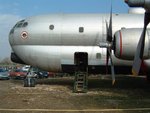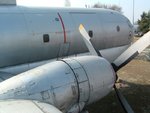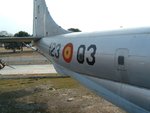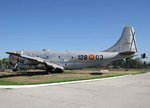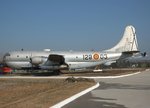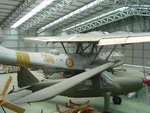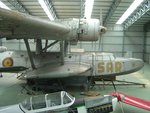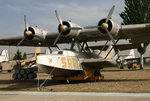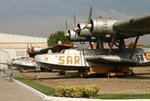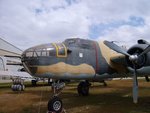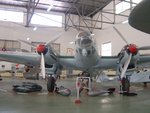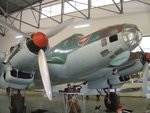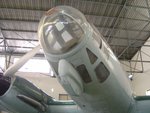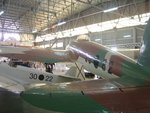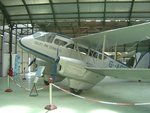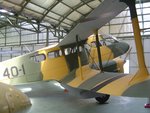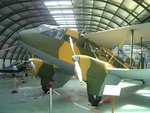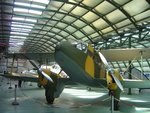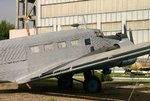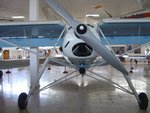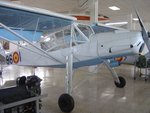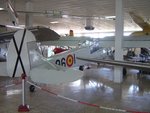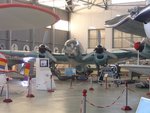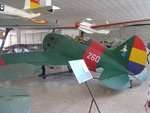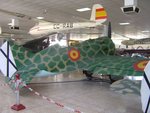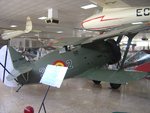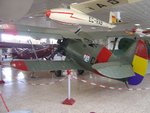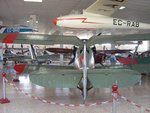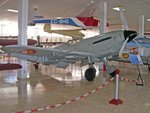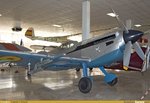The Museum at Cuatros Vientos airfield in Madrid houses an impressive collection of aircraft. This airfield was Spain's first military airfield and opened as long ago as 1911. Over 100 aircraft are currently on display, however the impressive collection also comprises photos and paintings, squadron badges, engines, airfield equipment, weapons, and other memorabilia. Famous aircraft on show include a Vilanova-Bleriot XI built in 1911, a Breguet XIX (Jesus del Gran Poder) used on the flights to Asia and America in 1928-29, and the famous G-ACYR Dragon Rapide, which flew General Franco from the Canary Islands to Tetuan at the begining of the Spanish Civil War in 1936.
Immediately upon entering the museum, you will confront Stratotanker, variant of the Boeing 377 Stratocruiser. Boeing KC-97L TK.1-03 (c/n 16971) is preserved in the squadron markings of Escuadrón 123 (123-03) and it served to refuel the F-4 Phantoms of Ala 12: the badge near the cockpit is indicative for this task. Note the jet pod under the wing, these were added to increase performance on take off. The refuelling boom on this Boeing KC-97L is clearly visible. The former USAF serial for this plane was 53-0189. The Spanish Air Force operated 3 of these KC-97L's, how the other 2 ended up can be seen on Stratocruisers at San Cugat And yet another C-97 existed as a restaurant / discotheque at Sotillo de la Adrada (about 75km west of Madrid) during the late-1970s / early-1980s.
Immediately upon entering the museum, you will confront Stratotanker, variant of the Boeing 377 Stratocruiser. Boeing KC-97L TK.1-03 (c/n 16971) is preserved in the squadron markings of Escuadrón 123 (123-03) and it served to refuel the F-4 Phantoms of Ala 12: the badge near the cockpit is indicative for this task. Note the jet pod under the wing, these were added to increase performance on take off. The refuelling boom on this Boeing KC-97L is clearly visible. The former USAF serial for this plane was 53-0189. The Spanish Air Force operated 3 of these KC-97L's, how the other 2 ended up can be seen on Stratocruisers at San Cugat And yet another C-97 existed as a restaurant / discotheque at Sotillo de la Adrada (about 75km west of Madrid) during the late-1970s / early-1980s.
Attachments
Last edited:

